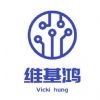全新原装现货库存,联系电话:13590238352黄小姐
产品概述
CAN Interface IC
Overview
The UJA1169 is a mini high-speed CAN System Basis Chip (SBC) containing an ISO 11898-2:201x (upcoming merged ISO 11898-2/5/6) compliant HS-CAN transceiver and_an integrated 5 V or 3.3 V 250 mA scalable supply (V1) for a microcontroller and/or other loads. It also features a watchdog and_a Serial Peripheral Interface (SPI). The UJA1169 can be operated in very low-current Standby and_Sleep modes with bus and_local wake-up capability.
The UJA1169 comes in six variants. The UJA1169TK, UJA1169TK/F, UJA1169TK/X and_UJA1169TK/X/F contain a 5 V regulator (V1). V1 is a 3.3 V regulator in the UJA1169TK/3 and_the UJA1169TK/F/3.
The UJA1169TK, UJA1169TK/F, UJA1169TK/3 and_UJA1169TK/F/3 variants feature a second on-board 5 V regulator (V2) that supplies the internal CAN transceiver and_can also be used to supply additional on-board hardware.
The UJA1169TK/X and_UJA1169TK/X/F are equipped with a 5 V supply (VEXT) for off-board components. VEXT is short-circuit proof to the battery, ground and_negative voltages. The integrated CAN transceiver is supplied internally via V1, in parallel with the microcontroller.
The UJA1169xx/F variants support ISO 11898-6:2013 and_ISO 11898-2:201x compliant CAN partial networking with a selective wake-up function incorporating CAN FD-passive.
CAN FD-passive is a feature that allows CAN FD bus traffic to be ignored in Sleep/Standby mode. CAN FD-passive partial networking is the perfect fit for networks that support both CAN FD and_classic CAN communications. It allows normal CAN controllers that do not need to communicate CAN FD messages to remain in partial networking Sleep/Standby mode during CAN FD communication without generating bus errors.
The UJA1169 implements the standard CAN physical layer as defined in the current ISO11898 standard (-2:2003, -5:2007, -6:2013). Pending the release of the upcoming version of ISO11898-2:201x including CAN FD, additional timing parameters defining loop delay symmetry are included. This implementation enables reliable communication in the CAN FD fast phase at data rates up to 2 Mbit/s.
A dedicated LIMP output pin is provided to flag system failures.
A number of configuration settings are stored in non-volatile memory. This arrangement makes it possible to configure the power-on and_limp-home behavior of the UJA1169 to meet the requirements of different applications.
MoreLess
## Features
### General
*_ISO 11898-2:201x (upcoming merged ISO 11898-2/5/6) compliant 1 Mbit/s high-speed CAN transceiver supporting CAN FD active communication up to 2 Mbit/s in the CAN FD data field (all six variants)
*_Autonomous bus biasing according to ISO 11898-6:2013 and_ISO 11898-2:201x
*_Scalable 5 V or 3.3 V 250 mA low-drop_voltage regulator for 5 V/3.3 V microcontroller supply (V1) based on external PNP transistor concept for thermal scaling
*_CAN-bus connections are truly floating when power to pin BAT is off
*_No ‘false’ wake-ups due to CAN FD traffic (in variants supporting partial networking)
### Designed for automotive applications
*_±8 kV ElectroStatic Discharge (ESD) protection, according to the Human Body Model (HBM) on the CAN-bus pins
*_±6 kV ESD protection according to IEC 61000-4-2 on pins BAT, WAKE, VEXT and_the CAN-bus pins
*_CAN-bus pins short-circuit proof to ±58 V
*_Battery and_CAN-bus pins protected against automotive transients according to ISO 7637-3
*_Very low quiescent current in Standby and_Sleep modes with full wake-up capability
*_Leadless HVSON20 package (3.5 mm x 5.5 mm) with improved Automated Optical Inspection (AOI) capability and_low thermal resistance
*_Dark green product (halogen free and_Restriction of Hazardous Substances (RoHS) compliant)
### Low-drop_voltage regulator for 5 V/3.3 V microcontroller supply (V1)
*_5 V/3.3 V nominal output;_±2 %_accuracy
*_250 mA output current capability
*_Thermal management via optional external PNP
*_Current limiting above 250 mA
*_Support for microcontroller RAM retention down to a battery voltage of 2 V (5 V only)
*_Undervoltage reset with selectable detection thresholds of 60 %, 70 %, 80 %_or 90%_of output voltage, configurable in non-volatile memory (5 V variants only)
*_Excellent transient response with a small ceramic output capacitor
*_Output is short-circuit proof to GND
*_Turned off in Sleep mode
### On-board CAN supply (V2;_UJA1169TK, UJA1169TK/F, UJA1169TK/3 and_UJA1169TK/F/3 only)
*_5 V nominal output;_±2 %_accuracy
*_100 mA output current capability
*_Current limiting above 100 mA
*_User-defined on/off behavior via SPI
### Off-board sensor supply (VEXT;_UJA1169TK/X and_UJA1169TK/X/F only)
*_Excellent transient response with a small ceramic output load capacitor
*_Output is short-circuit proof to BAT, GND and_negative voltages down to -18 V
### Power Management
*_Standby mode featuring very low supply current;_voltage V1 remains active to maintain the supply to the microcontroller
*_Sleep mode featuring very low supply current with voltage V1 switched off
*_Remote wake-up capability via standard CAN wake-up pattern or ISO 11898-6:2013 and_ISO 11898-2:201x compliant selective wake-up frame detection including CAN FD passive support (/F versions only)
*_Local wake-up via the WAKE pin
*_Wake-up source recognition
### System control and_diagnostic features
*_Mode control via the Serial Peripheral Interface (SPI)
*_Overtemperature warning and_shutdown
*_Watchdog with Window, Timeout and_Autonomous modes and_microcontrollerindependent clock source
*_Optional cyclic wake-up in watchdog Timeout mode
*_Watchdog automatically re-enabled when wake-up event captured
*_Watchdog period selectable between 8 ms and_4 s supporting remote flash programming via the CAN-bus
*_LIMP output pin with configurable activation threshold
*_Watchdog failure, RSTN clamping and_overtemperature events trigger the dedicated LIMP output signal
*_16-, 24- and_32-bit SPI for configuration, control and_diagnosis
*_Bidirectional reset pin with variable power-on reset length;_configurable in non-volatile memory to support a number of different microcontrollers
*_Customer configuration of selected functions via non-volatile memory
*_Dedicated modes for software development and_end-of-line flashing



